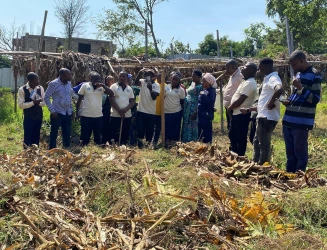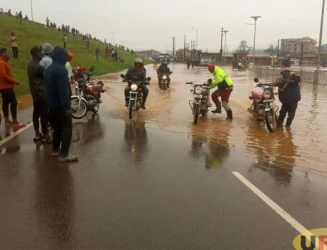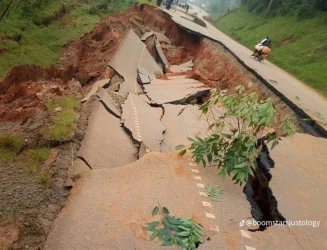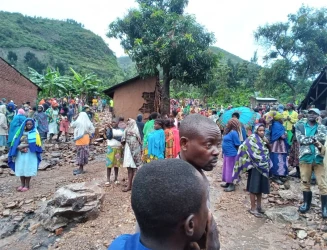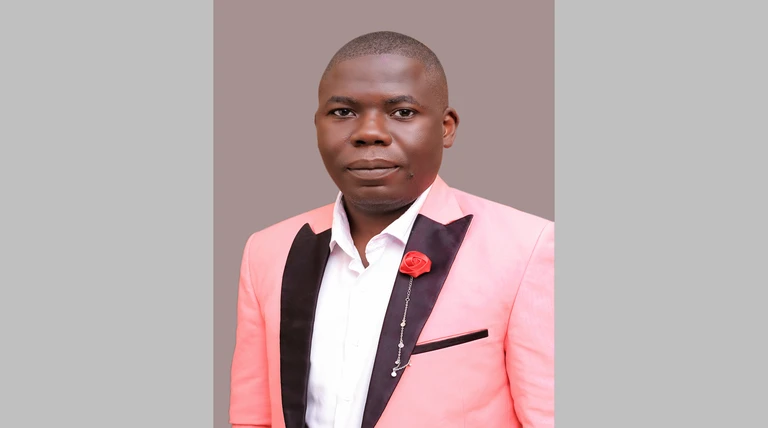
The Whispering Swamp – A Story of Uganda’s Wetlands and Youth Action
The Whispering Swamp”
In the heart of Uganda, cradled between the gentle slopes of Mount Elgon and the windingwaters of River Mpologoma, lay a vast wetland known to the Bagisu people as Namabasa. Toanoutsider, it might have seemed like just another patch of soggy ground—buzzing mosquitoes, croaking frogs, and endless reeds. But to those who lived nearby, Namabasa was a livingsoul, an ancient spirit whispering stories through the wind and fog, stories of balance, protection, andlife.
Mzee Walusimbi, the village elder, often said, “The swamp breathes for us. It drinks our stormsand gives us food, firewood, and clean water. If we kill it, we bury ourselves.”
For generations, the community respected Namabasa. Women fetched papyrus to weavemats, boys fished for tilapia in the slow, shallow pools, and herbalists gathered rare medicinal plantshidden in its belly. During floods, the wetland absorbed the raging waters, sparing the nearbyvillages. During droughts, it held hidden reserves that kept the streams alive.
But with time came change.
The nearby town of Busoba expanded. Roads cut across the edges of Namabasa, and trucksbegan hauling sand from its inner beds. Farmers, desperate for more land, drained parts of thewetland and planted rice and maize. Smoke rose from burning papyrus; the reeds once swayingin unison like choirs now stood isolated, bruised, and broken.
The swamp, once a soft hum of life, started to cough.
Fish became scarce. The rains grew irregular. When they came, they came with fury, floodinghomes. When they stopped, the land cracked like old skin. Streams dried, and the air grewheavywith dust and silence.
That year, cholera came with the floods. Then hunger.
Among those affected was Amina, a seventeen-year-old girl with bright eyes and fierce curiosity. Her father had cleared part of the wetland to plant rice after seeing others make quick money. At first, things looked promising—bumper harvests, a new bicycle, even a solar panel ontheir roof. But within two seasons, the land had turned sour, choked by weeds and pests. Water nolonger pooled naturally. The frogs vanished. So did the fireflies.
Then came the sickness. Amina’s younger brother, Musa, died after drinking froma contaminated stream. Her father’s health declined. The rice fields became barren. That bicyclewas eventually sold to buy medicine.
Grief pushed Amina to action.
She began asking questions, listening to elders, reading anything she could find about wetlandsand their role. One evening, she sat with Mzee Walusimbi, who told her the story of the WetlandSpirit—a tale of a woman who once guarded the swamp, blessing those who honored it andcursing those who plundered it. “She is still watching,” he whispered. “But she is weak. Wehaveforgotten her name.”
Amina didn’t forget. She took it upon herself to remember.
She started with her school, gathering classmates and forming the Friends of NamabasaClub. They organized clean-ups, planted papyrus along the dying edges, and campaigned door-to-door about preserving the swamp. She reached out to the district environment officer and lobbiedfor enforcement of wetland protection laws. Some officials laughed. Others listened.
At first, the villagers called her omusilu—a fool. “What will papyrus feed you?” they mocked. “You cannot eat frogs and frogs do not pay school fees.”
But when the heavy rains came again and Amina’s restored stretch of the swamp soakedupthefloods, sparing the school and surrounding homes, people began to look differently.
One by one, the community began returning to old ways—respecting the buffer zones, reducingsand mining, replanting native vegetation, and building eco-sanitation facilities. A cooperativeof women started weaving and selling mats and baskets from harvested, sustainably grownpapyrus. Fishermen returned to areas where fish had reappeared, thriving in the rejuvenatedpools.
Word spread. Local radio stations invited Amina to speak. Environmental NGOs reachedout, offering tools and training. She was invited to Kampala to share her story at a national wetlandsconservation forum. Standing before leaders and scientists, her voice shook—but her messagedid not:
“Wetlands are not wastelands. They are wombs of life. In them are our medicines, our food, our protection. We have traded these gifts for short-term profits and long-termdisasters. But it isnot too late. If we restore the wetlands, they will restore us.”
That speech went viral.
Government agencies began investing in community-led wetland management. Grants cameinto support eco-tourism, fish farming, and nature-based enterprises. Amina, still a student, wasappointed the Youth Wetland Ambassador for her district.
But she knew her true achievement wasn’t in titles. It was in how the children once againlaughed near the swamp, catching dragonflies. It was in how the elders now gathered totell thetales of the Wetland Spirit beside a healthy stream. It was in how her father, standing by theedge of his now-flooded rice field, whispered, “I was wrong—but I’m ready to listen now.”
Years later, as Namabasa began to breathe again, Amina would often walk through the reedsinthe early morning mist. She claimed she could hear the swamp whisper again—not in words, but in rhythm: the song of frogs, the rustle of reeds, the splash of fish, and the distant humof bees. The Wetland Spirit was healing.
And through it all, Amina remained its voice.
The swamp had whispered. She had answered. And the world was listening. Moral of the Story:
Wetlands are sacred ecological systems—natural sponges that protect against floods, droughts, and pollution. Their preservation is not a luxury but a necessity. This story is a call to action: toprotect our wetlands through community engagement, youth leadership, and indigenous wisdom before silence replaces their song forever.
Source : Muyanja james ,+256757694278
